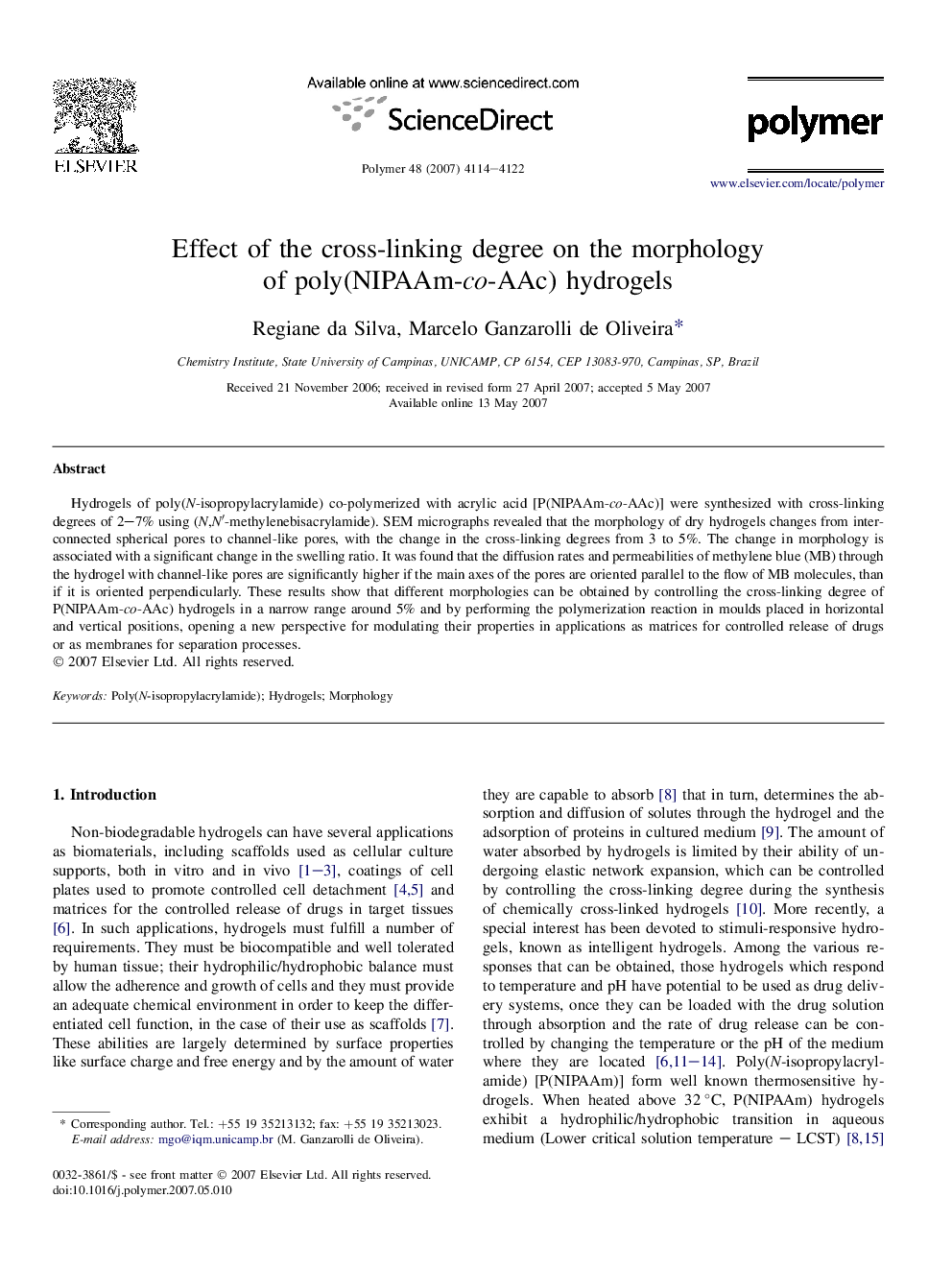| Article ID | Journal | Published Year | Pages | File Type |
|---|---|---|---|---|
| 5189946 | Polymer | 2007 | 9 Pages |
Abstract
Hydrogels of poly(N-isopropylacrylamide) co-polymerized with acrylic acid [P(NIPAAm-co-AAc)] were synthesized with cross-linking degrees of 2-7% using (N,Nâ²-methylenebisacrylamide). SEM micrographs revealed that the morphology of dry hydrogels changes from interconnected spherical pores to channel-like pores, with the change in the cross-linking degrees from 3 to 5%. The change in morphology is associated with a significant change in the swelling ratio. It was found that the diffusion rates and permeabilities of methylene blue (MB) through the hydrogel with channel-like pores are significantly higher if the main axes of the pores are oriented parallel to the flow of MB molecules, than if it is oriented perpendicularly. These results show that different morphologies can be obtained by controlling the cross-linking degree of P(NIPAAm-co-AAc) hydrogels in a narrow range around 5% and by performing the polymerization reaction in moulds placed in horizontal and vertical positions, opening a new perspective for modulating their properties in applications as matrices for controlled release of drugs or as membranes for separation processes.
Related Topics
Physical Sciences and Engineering
Chemistry
Organic Chemistry
Authors
Regiane da Silva, Marcelo Ganzarolli de Oliveira,
